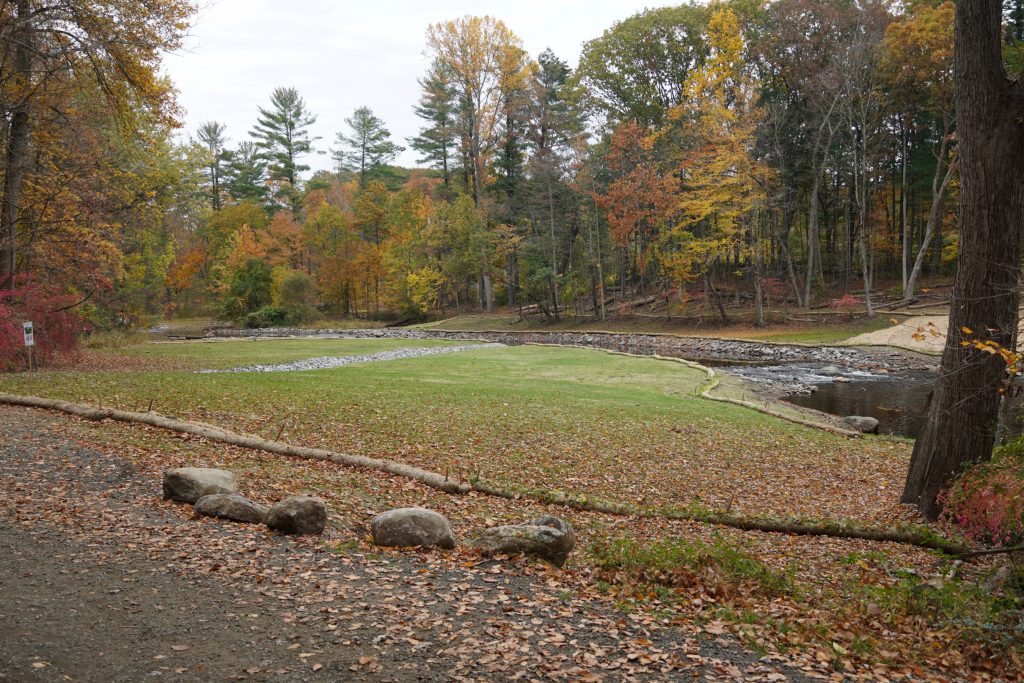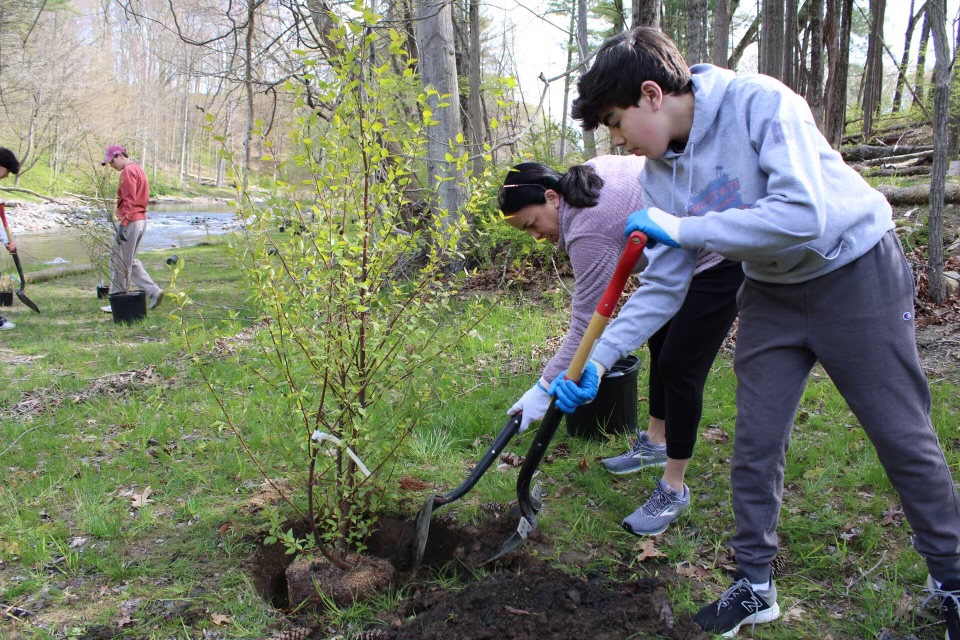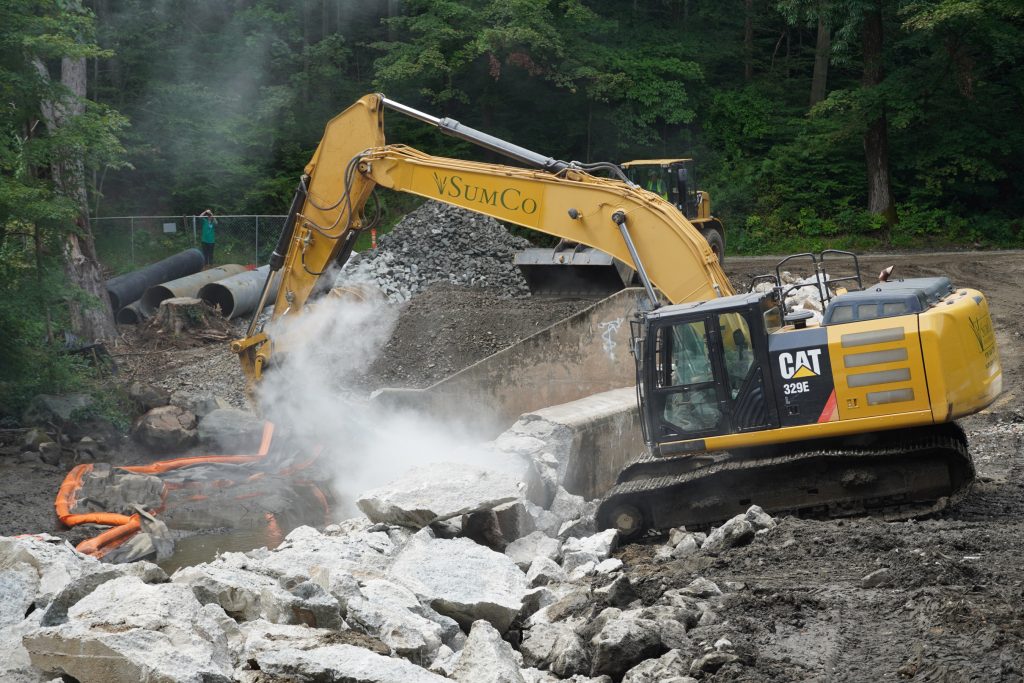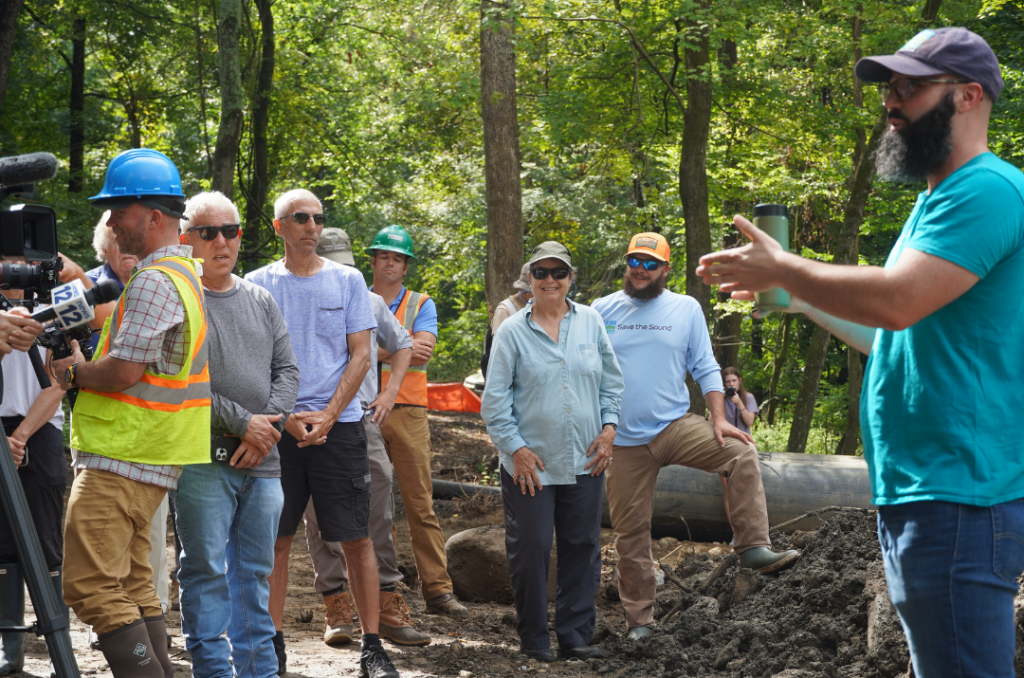
One year ago, Dana Dam (aka Strong Pond Dam), was removed, reconnecting 10 miles of Norwalk River habitat. A year later, the signs of habitat restoration are evident.
Nearly 40 different species of trees and shrubs, planted by dozens of volunteers, now grow along the embankment of the river. Sea lamprey spawns upstream of the former dam site, confirming upstream fish passage.

“In the Spring 2024, volunteers from Trout Unlimited and Save the Sound documented several Sea Lamprey redds just a few hundred yards upstream of the Dana Dam removal site,” Gerald Berrafati, chapter coordinator of Mianus Trout Unlimited, said. “This marked the first time in nearly 130 years that Sea Lamprey were able to come back and spawn in this section of river!”
Through collaboration with Trout Unlimited, Save the Sound, and the Town of Wilton, as well as the larger River Restoration Network, a network comprised of eight environmental organizations aiming to streamline and accelerate the pace of dam removal, the story of Dana Dam’s removal is one rooted in partnership.
Dana Dam was built in the early 1940s by Charles Dana to create a recreational pond and for 80 years, the dam (and others like it along the Norwalk River) blocked movement of fish and river wildlife, increased water temperatures, and submerged the natural floodplain of the river.

Since Dana Dam was removed, the site has withstood multiple large storms, including the Long Island Sound region’s historic August flooding. Education around the former dam site has been ongoing, with three planting events held throughout 2024, where over 100 volunteers planted more than 400 native plants, and six educational site walks. Each time the community gathers at the newly restored site, the importance of and knowledge around dam removal and river restoration is shared.

“I’ve lived in Wilton my entire life and could have never imagined seeing as significant a transformation from a dammed pond to a beautiful, restored river,” Berrafati continued. “Overall, I couldn’t be more impressed with how this site turned out.”
In the years to come, the former site of Dana Dam will continue to be ecologically monitored to contribute to an even greater understanding of how dam removal benefits our river ecosystems and our communities.
